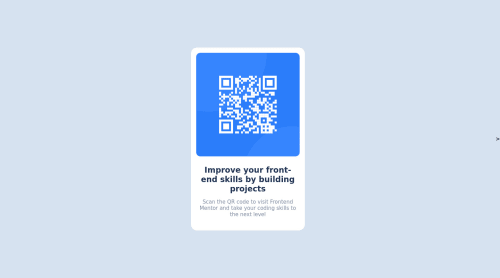QR code component using HTML and CSS

Solution retrospective
I'm new here and this is my first challenge, how did I do? Is there anything I could improve in my code?
Please log in to post a comment
Log in with GitHubCommunity feedback
- @termjs
Hey, congratulations on your first challenge on Frontend Mentor!
-
Your HTML file should have one <main> landmark. It's the same as having content inside a <div> tag, but it's necessary to use this in an easier and more practical way in these kinds of challenges.
-
Your HTML page should contain a level-one heading tag <h1>.
-
Try using the flex-box and center out your card, it's more practical and more officiant.
Marked as helpful -
- @correlucas
👾Hello Gabi, congratulations for you solution!
You did a really good solution really, the container is really good done and flexible!
To improve it a bit you can use semantic tags to wrap your container, in this case you can use
<main>and if you want to clean a bit your css you can select all the elements without using any class, you can just call its selectors direct into the css withmain, p, h1, imgand manage everything!Hope it helps and happy coding!
Marked as helpful - @PhoenixDev22
Hi Gabi,
Congratulation on completing this challenge. Your solution looks great. I see you have received some incredible feedback. I have some suggestions regarding your solution if you don’t mind:
- Use the
<main>landmark to wrap the card. HTML5 landmark elements are used to improve navigation experience on your site for users of assistive technology.
- Page should contain
<h1>. In this challenge , as it’s supposed to be a part of a whole page, you may use<h1>withsr-onlyclass hidden visually and present for assistive tech users.
- In my opinion , the alternate text is needed on this image. It should indicate where the *Qr code navigate the user : like
Qr code to frontend mentor.
- Consider using
remfor font size .If your web content font sizes are set in absolute units, such as pixels, the user will not be able to re-size the text or control the font size based on their needs. Relative units “stretch” according to the screen size and/or user’s preferred font size, and work on a large range of devices.
Aside these, Great work again. Hopefully his feedback helps.
Marked as helpful - Use the
Join our Discord community
Join thousands of Frontend Mentor community members taking the challenges, sharing resources, helping each other, and chatting about all things front-end!
Join our Discord